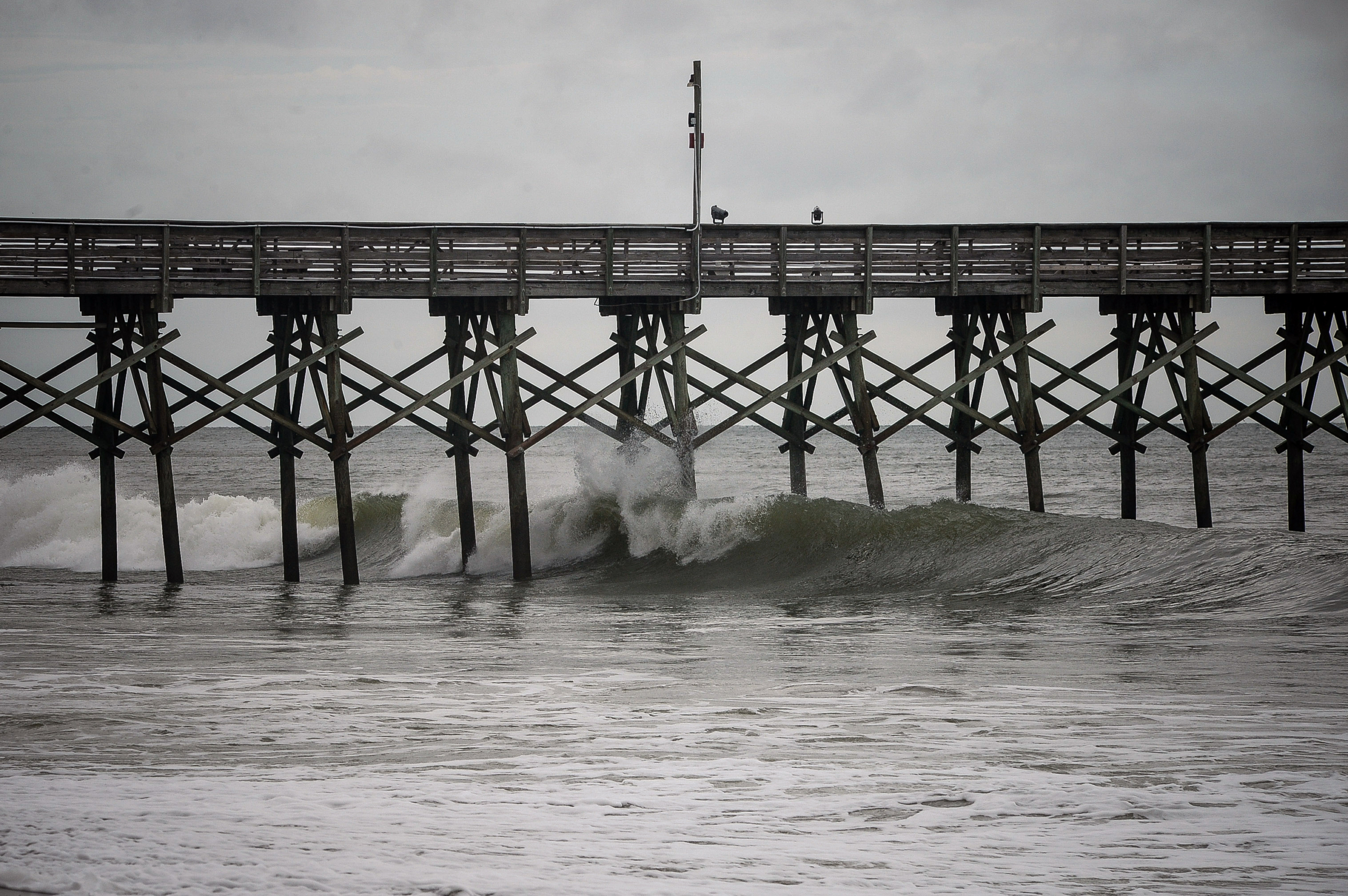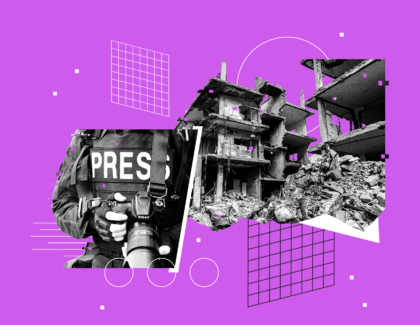Sign up for the daily CJR newsletter.
As the week began, Hurricane Florence was shaping up to be a once-in-a-generation storm, and for Myrtle Beach, South Carolina, the forecast just kept getting worse. At WMBF-TV, the NBC affiliate in town, chief meteorologist Jamie Arnold and his team pored through National Hurricane Center updates and dug into computerized weather simulations to predict the hurricane’s impact. It appeared the storm, which was gaining strength, might stall upon landfall—bad news which could mean days of high winds, lingering, heavy rainfall, and a life-threatening storm surge.
Arnold, 42, went on the air to detail the latest—and then online to field questions from social media followers: Where will the flooding be worst? When will the roads be safe? Should my family stay, or should we go? Arnold encouraged followers to consider the worst-case scenario and to act soon.
“It’s times like this when I feel we’re not just a news service but when we’re potentially sending out life-saving information,” Arnold tells CJR. “This is when we really become a part of the community.”
Meteorologists like Arnold have long been tentpoles of communities across the US, entertaining audiences in fair weather and counseling them in bad. It isn’t completely surprising that they would be in demand as storms loom. But it is notable, in the age of Twitter and smartphones, that the broadcast TV weather person—analog, local, old-school—has stayed so viable.
ICYMI: It’s getting more difficult for foreign journalists to work in the US
“There’s no question local weather is one of those things that remains essential,” says Kristen Hare, a local news specialist at the Poynter Institute. Apps and technology can tell us a lot, she explains, but they can’t guide us through situations that threaten our personal safety, like a hurricane, with the degree of clarity and compassion that local meteorologists bring.
“People want to know how the storm’s going to impact them,” Arnold says, noting that negligible shifts in big picture forecasts can have dramatic impacts locally. “In my little corner of the world, in my sixteen counties, that’s what my forecasts are going to be about.”’
Just as important as technical expertise, Arnold says, is the ability to communicate in simple, practical terms. Here, too, a local touch is critical.
“We trust our local broadcasters because they’re a part of our community, they’re going through the storm, too,” says Karen Goodwin, a 65-year-old Myrtle Beach resident. “They’re down-to-earth and tell it like it is.”
On Wednesday, Goodwin evacuated to Florida with an 8-year-old granddaughter who carried with her a WMBF kids’ hurricane tracker—a dry erase map of the US with instructions on tracking storms.
Negligible shifts in big picture forecasts can have dramatic impacts locally.
When Arnold spoke with CJR on Tuesday evening, he was climbing the stairs to his condo—the elevators in his building were already shut off in preparation for a loss of power. A North Carolina native who’s been at the station for 10 years, he says storms are when says he feels most connected with his audience: “Those hours when the studio ceiling is shaking, when it’s roaring and it’s scary and you hear it, it’s something we’re all going through it together.”
Arnold’s meteorology team was already working 12 hours on, 12 hours off, but soon the effort would run around the clock, with people catching a brief rest where they could, for an hour or two in a dark conference room, or under a desk. For the duration of the storm, WMBF would broadcast constantly on TV and radio simulcast, as well as post updates to social media and answer questions via Facebook Live.
At WMBF, social media engagements were up five-fold this week, ahead of the storm. While Arnold’s flagship medium is television, online is where he connects with much of his audience, hurricane or no.
“They allow listeners to ask questions, and they answer to the best of their ability,” says Christine Bouchard, 37, who lives in Myrtle Beach with her husband and two children and tunes in regularly to Arnold’s Facebook Live sessions. “ It makes them feel like family, and you trust family.”
Local TV stations have proven a natural fit for social media, according to a 2018 Knight Foundation study. And while TV audiences have declined in recent decades, outreach in the digital world could help stations shore-up their role in a shifting news landscape. The meteorologist is set to be in high demand in the coming decade. As major storms seem likely to arrive with increasing frequency due to climate change, their personal touch and detailed knowledge of the local terrain are more crucial than ever.
So far TV reporters have benefited primarily from these trends, but Hare at the Poynter Institute cites The Washington Post’s popular Capital Weather Gang as evidence that meteorologists at traditional newspapers can also amass a loyal local following. Independent meteorologists have also proven invaluable, Hare says, such as Eric Berger, a former Houston Chronicle reporter whose Space City Weather website reached 900,000 people during Hurricane Harvey in 2016.
Scott Dean, chief meteorologist at WWAY-TV, the CBS and ABC-affiliate in Wilmington, North Carolina, says that in a hurricane, social media can be an excellent resource for people who lose power. It also enables users to send journalists snapshots and videos from far-flung areas, which help meteorologists check and update their analysis—a constant process during crisis events.
“Our plan is to go into lockdown mode at the station and to continue coverage until the threat has passed,” Dean says. “We feel that’s our obligation to the viewers.”
As the week wore on, forecasts showed that when Florence reached land it was likely to turn southeast towards Myrtle Beach. At WMBF, Arnold and the rest of the station crew hunkered down and braced for the days ahead. The worst of the storm would likely be gone by Sunday, but hurricanes are often as much about the aftermath as they are the storm, Arnold says.
On Friday, the hurricane made landfall at 7:15am near Wilmington. Hours earlier, Arnold had updated his Facebook with the latest: “Florence is on our doorstep … I can’t emphasize enough how long of a day and night it’s gonna be.”
One comment on the post read, “I evacuated yesterday and am living through your live feed and app on my phone. You guys rock. Stay safe.”
RELATED: After Hurricane Maria, AM radio makes a comeback in Puerto Rico
Has America ever needed a media defender more than now? Help us by joining CJR today.







